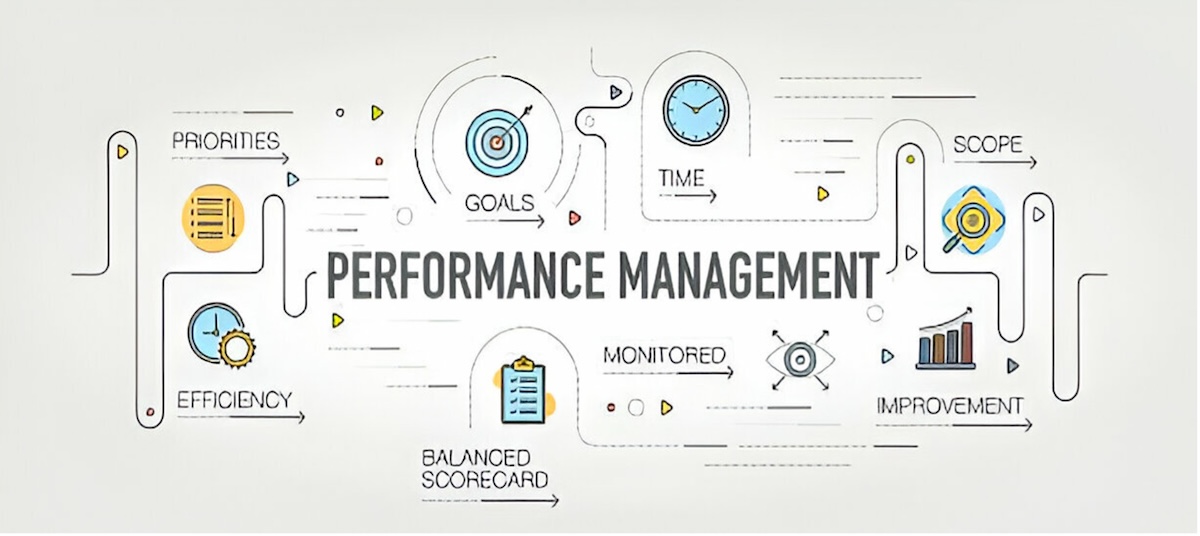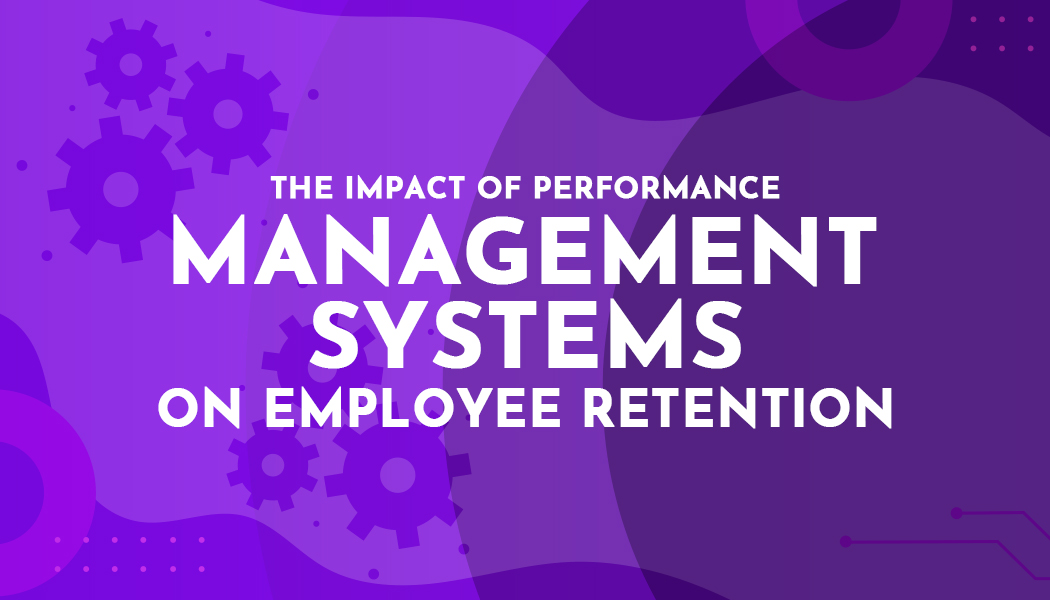The Impact of Performance Management Systems on Employee Retention
In today's competitive business environment, organizations are increasingly focusing on strategies that not only enhance productivity but also foster long-term commitment from their employees. One such critical strategy is the implementation of Performance Management Systems (PMS). This article explores how these systems influence employee retention, highlighting their benefits, challenges, and future trends.
1: Understanding Performance Management Systems

Performance Management Systems (PMS) are comprehensive frameworks that organizations utilize to optimize employee performance and align it with organizational goals. These systems typically involve several key components:
a. Goal Setting: PMS starts with creating specific and measurable goals for individual employees or teams. These goals are consistent with the organization's strategic objectives, ensuring that every employee understands their role in attaining overall success. Clear goals provide employees with a sense of direction and purpose, inspiring them to do their best.
b. Continuous Feedback: Feedback is a cornerstone of effective PMS. It involves regular, constructive conversations between managers and employees regarding performance. This feedback helps in acknowledging strengths, identifying areas for improvement, and making necessary adjustments to enhance performance. It also fosters a culture of open communication and transparency within the organization.
c. Performance Evaluation: PMS includes formal mechanisms for evaluating employee performance against predefined goals and expectations. This evaluation may occur periodically (e.g., quarterly or annually) and serves multiple purposes: recognizing achievements, identifying development needs, and informing decisions related to promotions, bonuses, or career advancements.
d. Development and Training: Effective PMS incorporates opportunities for employee development and training. By identifying skill gaps through performance evaluations, organizations can offer targeted training programs to enhance employee competencies. Coworking tools can further support this process by fostering collaboration, improving communication, and streamlining training initiatives. This not only improves individual performance but also contributes to overall organizational capability and competitiveness.
e. Rewards and Recognition: Recognizing and rewarding high-performing employees is an essential component of PMS. It reinforces desired behaviors and outcomes, motivating employees to maintain high levels of performance. Rewards can take various forms, including monetary bonuses, promotions, public recognition, or additional responsibilities that align with career aspirations.
2: The Relationship Between PMS and Employee Retention
Effective PMS can significantly impact employee retention rates. By providing regular feedback and recognition, these systems help in creating a positive work environment where employees feel valued and motivated to contribute to organizational success. Moreover, clear performance expectations and career development opportunities offered through PMS can increase job satisfaction and reduce turnover.
Research indicates a strong correlation between feedback and retention. Employees who receive regular feedback on their performance are more likely to feel engaged and committed to their roles. They understand how their contributions contribute to the organization's success and see opportunities for growth within the company. This sense of purpose and direction is instrumental in building loyalty and reducing turnover rates.
3: Benefits of Effective Performance Management Systems
Implementing an effective Performance Management System (PMS) yields numerous benefits for both employees and organizations:
a. Improved Employee Performance: Clear goals, regular feedback, and development opportunities provided by PMS enhance employee performance. Employees are motivated to achieve their goals and continuously improve their skills, contributing to overall organizational productivity and efficiency.
b. Enhanced Employee Engagement: PMS fosters a culture of engagement by promoting open communication, recognition of achievements, and involvement in decision-making processes. Engaged employees are emotionally committed to their work and the organization, leading to higher levels of job satisfaction and reduced turnover.
c. Talent Development and Retention: By identifying high-potential employees and providing them with development opportunities, PMS helps in nurturing talent within the organization. Employees feel valued and supported in their career growth, which increases their loyalty and reduces the likelihood of seeking external opportunities.
d. Alignment of Goals: PMS ensures that individual goals are aligned with organizational objectives. This alignment clarifies expectations and priorities, enabling employees to focus their efforts on activities that contribute most to the company's success. As a result, organizations achieve greater coherence and efficiency in pursuing strategic goals.
e. Data-Driven Decision Making: PMS provides valuable data on employee performance, strengths, and development needs. Organizations can use this data to make informed decisions regarding promotions, succession planning, and resource allocation, thereby optimizing their human capital management strategies.
f. Organizational Agility: PMS facilitates agility by enabling organizations to adapt quickly to changing market conditions and business priorities. Employees who receive regular feedback and development support are better equipped to respond to new challenges and opportunities, enhancing organizational resilience and competitiveness.
4: Case Studies and Examples
Illustrative examples of organizations that have successfully implemented PMS to improve employee retention and overall performance include:
- Google: Known for its "OKRs" (Objectives and Key Results) framework, Google uses PMS to align individual goals with company-wide objectives. Employees receive continuous feedback and recognition, fostering a culture of high performance and retention.
- Zappos: This online retailer emphasizes a culture of customer service excellence. Their PMS focuses on core values and cultural fit, ensuring that employees who embody these principles are recognized and retained.
- General Electric: GE implemented a robust PMS that includes performance evaluations tied to career development plans. This approach has helped in identifying and nurturing talent, resulting in improved employee retention and organizational performance.
These case studies highlight how tailored PMS strategies can contribute to employee satisfaction and long-term retention.
5: Challenges and Solutions
Implementing an effective PMS is not without its challenges. Some common obstacles include:
a. Resistance to Change: Addressing resistance from employees and managers during the implementation phase is crucial. Communication and training programs can help in overcoming this barrier.
b. Performance Measurement Accuracy: Ensuring that performance metrics used are fair, objective, and accurately reflect employee contributions is essential. Regular calibration and feedback loops can improve accuracy.
c. Maintaining Motivation: Sustaining employee motivation and engagement over time through effective use of PMS requires ongoing effort. Recognizing achievements and providing growth opportunities are key strategies.
6: Future Trends in Performance Management
a. Integration of AI and Big Data: Emerging technologies are reshaping PMS to provide real-time insights and predictive analytics. AI-powered tools can analyze large datasets to identify performance trends and predict future outcomes.
b. Focus on Continuous Feedback: There is a shift towards ongoing performance conversations rather than annual reviews. Regular feedback enables timely course corrections and encourages continuous improvement.
c. Personalization: Customizing PMS to meet the needs and preferences of individual employees enhances engagement and satisfaction. Tailored development plans and feedback mechanisms create a more personalized employee experience.
Conclusion
In conclusion, Performance Management Systems are not just tools for evaluating performance but crucial drivers of employee retention and organizational success. By implementing effective PMS, organizations can create a culture of continuous improvement, engagement, and mutual growth, ultimately reducing turnover and retaining top talent in the long term.




